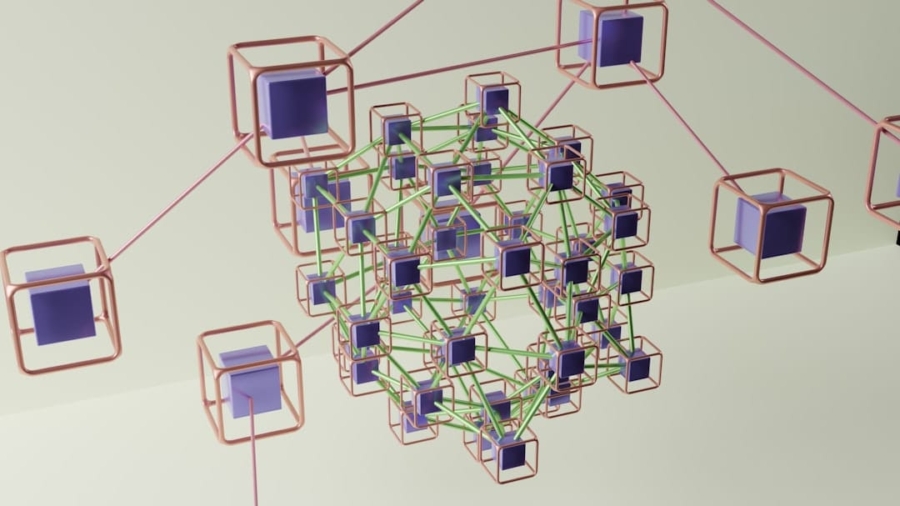The energy sector is undergoing a profound transformation driven by emerging technologies that promise to reshape how energy is produced, distributed, and consumed. As the world grapples with the pressing challenges of climate change, energy security, and the need for sustainable development, innovative solutions are being developed to address these issues. Technologies such as renewable energy systems, smart grids, energy storage solutions, and electric vehicles are at the forefront of this revolution.
Emerging technologies in energy are characterized by their ability to integrate digital innovations with traditional energy systems. The convergence of information technology and energy infrastructure has led to the development of smart grids, which utilize advanced communication and control technologies to optimize electricity distribution.
Additionally, the rise of decentralized energy systems, including microgrids and community solar projects, empowers consumers to take an active role in energy generation and management.
Key Takeaways
- Emerging technologies are transforming the energy sector with innovations in generation, distribution, and storage.
- Renewable energy is significantly reducing reliance on traditional fossil fuel power sources.
- Smart grids enhance energy distribution efficiency and enable better demand management.
- Energy storage solutions are critical for integrating intermittent renewable sources into the grid.
- Electric vehicles and blockchain technology are reshaping energy demand and trading, while decentralized systems and regulatory challenges require adaptive policies.
Impact of Renewable Energy on Traditional Power Sources
The advent of renewable energy sources such as solar, wind, hydroelectric, and geothermal has significantly impacted traditional power generation methods, particularly fossil fuels. As the cost of renewable technologies continues to decline, they have become increasingly competitive with conventional energy sources. For instance, the levelized cost of electricity (LCOE) for solar photovoltaic (PV) systems has dropped by over 80% since 2010, making it one of the most affordable sources of new electricity generation in many regions.
This economic viability has led to a surge in renewable energy installations worldwide, challenging the dominance of coal and natural gas. Moreover, the integration of renewable energy into the grid has prompted traditional power sources to adapt or face obsolescence. Utilities are now compelled to rethink their business models as they navigate the complexities of a more decentralized and variable energy landscape.
For example, coal-fired power plants are being retired at an unprecedented rate in countries like the United States and Germany due to both regulatory pressures and market dynamics favoring cleaner alternatives. This transition not only reduces greenhouse gas emissions but also stimulates job creation in the renewable sector, further reinforcing the shift away from fossil fuels.
The Role of Smart Grids in Revolutionizing Energy Distribution

Smart grids represent a significant leap forward in energy distribution technology, incorporating digital communication tools to enhance the efficiency and reliability of electricity delivery. By utilizing sensors, smart meters, and advanced analytics, smart grids enable real-time monitoring and management of electricity flows. This capability allows utilities to respond swiftly to fluctuations in demand and supply, reducing the risk of outages and improving overall grid stability.
For instance, during peak demand periods, smart grids can automatically adjust loads or draw from distributed energy resources to maintain balance. Furthermore, smart grids facilitate greater integration of renewable energy sources by managing their inherent variability. With advanced forecasting tools and demand response programs, utilities can better predict when solar or wind generation will peak and adjust consumption patterns accordingly.
This flexibility is crucial for maximizing the use of clean energy while minimizing reliance on fossil fuel backup generation. Additionally, smart grids empower consumers with data-driven insights into their energy usage, enabling them to make informed decisions about their consumption habits and participate in demand response initiatives.
The Integration of Energy Storage Solutions in the Grid
Energy storage solutions are pivotal in addressing the intermittency associated with renewable energy sources. Technologies such as lithium-ion batteries, pumped hydro storage, and emerging solutions like solid-state batteries play a crucial role in storing excess energy generated during peak production times for use during periods of high demand or low generation. For example, Tesla’s deployment of large-scale battery systems has demonstrated how energy storage can stabilize the grid while providing backup power during outages.
These systems not only enhance grid reliability but also support the integration of more renewable resources. The economic implications of energy storage are also significant. As battery costs continue to decline—projected to fall by another 50% by 2030—energy storage is becoming an increasingly attractive investment for utilities and consumers alike.
In regions with high solar penetration, such as California, energy storage systems are being deployed to mitigate the “duck curve” phenomenon, where solar generation peaks during the day but demand surges in the evening. By storing solar energy for later use, these systems help flatten demand spikes and reduce reliance on fossil fuel peaker plants.
The Influence of Electric Vehicles on Energy Demand
Electric vehicles (EVs) are rapidly gaining traction as a viable alternative to traditional gasoline-powered cars, significantly influencing overall energy demand patterns. As EV adoption increases—projected to reach over 30% of global vehicle sales by 2030—the implications for electricity consumption are profound. EVs not only represent a new source of demand for electricity but also offer opportunities for grid services through vehicle-to-grid (V2G) technology.
This capability allows EVs to discharge stored energy back into the grid during peak demand periods, effectively acting as mobile energy storage units. The impact of EVs on energy demand is multifaceted. On one hand, increased electricity consumption from EV charging can strain existing grid infrastructure if not managed properly.
Utilities must invest in upgrading their systems to accommodate this new load while ensuring that charging occurs during off-peak hours to minimize disruptions. On the other hand, widespread EV adoption can lead to a reduction in greenhouse gas emissions from the transportation sector, especially when coupled with a decarbonized electricity grid powered by renewables. This dual benefit underscores the importance of integrating EV strategies into broader energy planning efforts.
The Potential of Blockchain Technology in Energy Trading

Blockchain technology is emerging as a transformative force in the energy sector, particularly in facilitating peer-to-peer (P2P) energy trading models. By leveraging decentralized ledger technology, blockchain enables secure and transparent transactions between producers and consumers without the need for intermediaries. This innovation allows individuals with solar panels or other distributed generation assets to sell excess electricity directly to their neighbors or local communities, fostering a more localized and resilient energy economy.
One notable example is the Brooklyn Microgrid project in New York City, which utilizes blockchain to enable residents with solar panels to trade surplus energy with one another. Participants can set their prices and negotiate trades through a secure platform that records all transactions on a public ledger. This model not only empowers consumers but also enhances grid resilience by promoting localized energy production and consumption.
As blockchain technology matures, its potential applications in energy trading could lead to more efficient markets and greater consumer engagement in the transition towards sustainable energy systems.
The Rise of Decentralized Energy Systems and Microgrids
Decentralized energy systems and microgrids are gaining prominence as viable alternatives to traditional centralized power generation models. These systems allow communities or even individual buildings to generate their own electricity using local resources such as solar panels or wind turbines. Microgrids can operate independently or in conjunction with the main grid, providing enhanced resilience against outages and reducing transmission losses associated with long-distance electricity transport.
The rise of microgrids is particularly evident in remote or underserved areas where access to reliable electricity is limited. For instance, in rural India, microgrid projects powered by solar energy have been implemented to provide electricity to villages that previously relied on kerosene lamps or diesel generators. These decentralized systems not only improve access to clean energy but also stimulate local economies by creating jobs related to installation and maintenance.
Furthermore, microgrids can contribute to national goals for renewable energy adoption by demonstrating successful models that can be replicated elsewhere.
Policy and Regulatory Challenges in Adapting to Emerging Energy Technologies
Despite the promising advancements brought about by emerging technologies in the energy sector, significant policy and regulatory challenges remain that hinder their widespread adoption. Traditional regulatory frameworks often struggle to keep pace with rapid technological changes, leading to uncertainties that can stifle innovation. For example, many utilities operate under cost-of-service regulations that incentivize maintaining existing infrastructure rather than investing in new technologies like smart grids or distributed generation.
Additionally, there is often a lack of clarity regarding interconnection standards for distributed energy resources (DERs), which can create barriers for individuals or businesses looking to install solar panels or battery systems. Policymakers must navigate complex issues related to grid reliability, market design, and consumer protection while fostering an environment conducive to innovation. Collaborative efforts among stakeholders—including utilities, regulators, technology providers, and consumers—are essential for developing policies that support the integration of emerging technologies into existing frameworks while ensuring equitable access to clean energy solutions.
As emerging technologies continue to reshape the landscape of the energy sector, addressing these regulatory challenges will be critical for realizing their full potential. By fostering an adaptive regulatory environment that encourages innovation while safeguarding public interests, policymakers can help facilitate a smoother transition towards a sustainable and resilient energy future.
In the context of how emerging technologies are reshaping traditional energy systems, it’s interesting to explore the broader implications of innovation across various sectors. For instance, the article on the best software for house plans discusses how advanced design tools can enhance energy efficiency in residential construction, ultimately contributing to more sustainable energy practices. This intersection of technology and energy efficiency highlights the potential for software innovations to support the transition towards greener energy solutions.
FAQs
What is meant by “emerging technology” in the context of energy systems?
Emerging technology refers to new and innovative technologies that are currently developing or will be developed within the near future. In energy systems, this includes advancements such as smart grids, energy storage solutions, renewable energy technologies, and digital tools like artificial intelligence and blockchain that improve efficiency and sustainability.
How do emerging technologies disrupt traditional energy systems?
Emerging technologies disrupt traditional energy systems by decentralizing energy production, enhancing grid management, increasing energy efficiency, and enabling the integration of renewable energy sources. This leads to reduced reliance on fossil fuels, lower emissions, and more resilient and flexible energy infrastructure.
What are some examples of emerging technologies impacting energy systems?
Examples include solar photovoltaic (PV) panels, wind turbines, battery energy storage systems, smart meters, demand response technologies, artificial intelligence for grid optimization, and blockchain for energy trading and transparency.
Why is the disruption of traditional energy systems important?
Disrupting traditional energy systems is important to address climate change, reduce greenhouse gas emissions, improve energy access and affordability, and create more sustainable and efficient energy infrastructures that can meet growing global energy demands.
How do smart grids contribute to the transformation of energy systems?
Smart grids use digital communication technology to monitor and manage electricity flows in real-time. They enable better integration of renewable energy, improve reliability, reduce energy losses, and allow consumers to participate actively in energy markets through demand response and distributed generation.
What role does energy storage play in emerging energy technologies?
Energy storage systems, such as batteries, allow excess energy generated from renewable sources to be stored and used when production is low or demand is high. This helps balance supply and demand, enhances grid stability, and supports the transition to renewable energy.
Can emerging technologies make energy systems more sustainable?
Yes, emerging technologies promote sustainability by enabling cleaner energy production, reducing waste, improving energy efficiency, and facilitating the integration of renewable energy sources, which collectively reduce environmental impact.
Are there challenges associated with integrating emerging technologies into traditional energy systems?
Yes, challenges include high initial costs, regulatory and policy barriers, technical integration issues, cybersecurity risks, and the need for updated infrastructure and skilled workforce to manage new technologies effectively.
How do emerging technologies affect energy consumers?
Emerging technologies can empower consumers by providing more control over their energy use, enabling participation in energy markets, reducing costs through efficiency, and offering access to cleaner energy options.
What is the future outlook for traditional energy systems with the rise of emerging technologies?
Traditional energy systems are expected to evolve into more decentralized, digitalized, and sustainable networks. While fossil fuels may still play a role in the near term, the increasing adoption of emerging technologies will likely lead to a significant shift toward renewable and distributed energy resources.

